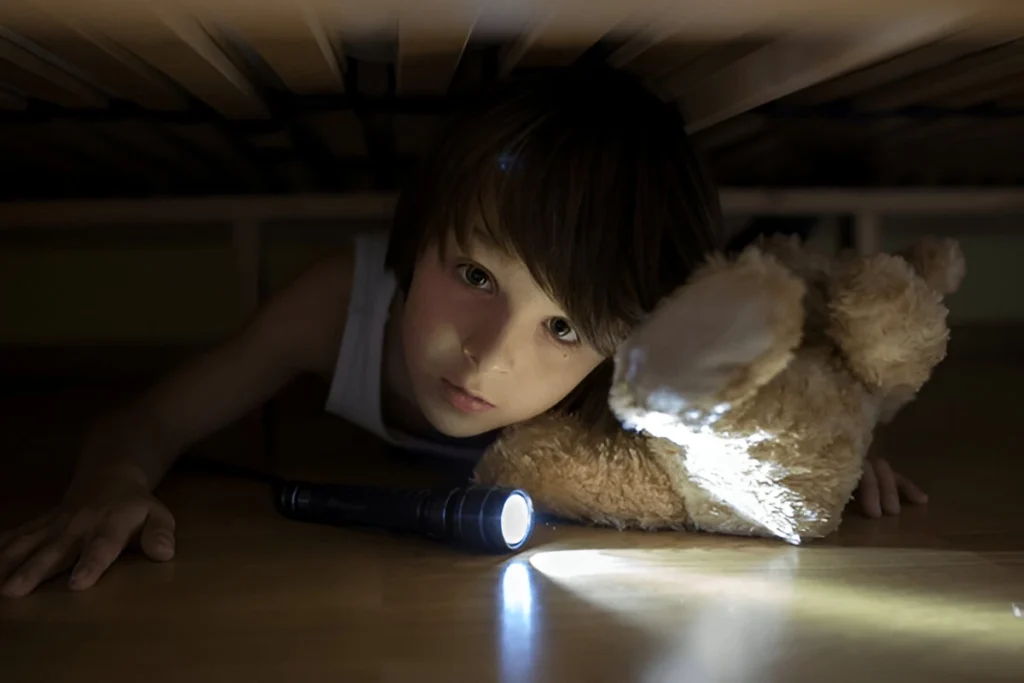Are you stuck in a nightly battle because your toddler won’t stay in bed? You’re not alone. Many parents find themselves pacing the hallway, negotiating with tiny humans who suddenly need “just one more hug.” It’s exhausting, frustrating, and sometimes baffling. But don’t worry! With the right strategies and a little patience, you can transform chaotic bedtimes into peaceful routines.
In this guide, we’ll explore why your toddler refuses to stay put, practical tips to solve the issue, and how to foster healthy sleep habits. Ready to reclaim your evenings? Let’s dive in!
Why Your Toddler Won’t Stay in Bed
Common Toddler Sleep Challenges
Toddlers are naturally curious, energetic, and prone to testing boundaries. When it comes to bedtime, this combination often spells trouble. Common challenges include:
- Resistance to bedtime: They’ve just discovered their independence and want to assert it, even if it’s 9 PM.
- Separation anxiety: Your toddler may feel uneasy being away from you during the night.
- Developmental milestones: Walking, talking, or potty training can disrupt their sleep patterns.
Did you know? The American Academy of Pediatrics emphasizes the importance of 10-14 hours of sleep for toddlers daily to support healthy development.

Understanding Your Toddler’s Behavior
Why won’t your toddler stay in bed? Let’s break it down:
- Fear of missing out (FOMO): Your toddler might believe they’re missing exciting activities while they sleep.
- Habitual awakenings: If they’ve learned that leaving the bed gets them extra cuddles or stories, they’ll keep doing it.
- Unclear expectations: If bedtime rules are inconsistent, toddlers may feel confused about what’s expected of them.
The good news? Identifying the root cause is the first step to solving the problem.
The Importance of a Consistent Bedtime Routine
What Makes a Bedtime Routine Effective?
A good routine isn’t just about brushing teeth and reading stories—it’s about setting the tone for sleep. Here’s what helps:
- Predictability: Toddlers thrive on structure. Knowing what comes next eases transitions.
- Calming activities: Stories, cuddles, and soft music signal it’s time to wind down.
- Timing: Keep the routine short (20-30 minutes) and start it at the same time every night.

How to Establish a Routine That Sticks
- Start early: Begin the bedtime routine 30 minutes before you want your child asleep.
- Be consistent: Follow the same order of activities every night.
- Limit distractions: Keep toys, screens, and exciting activities out of the bedroom.
Toddler Won’t Stay in Bed: Addressing Nighttime Anxiety
What Triggers Nighttime Anxiety?
It’s common for toddlers to experience fear and anxiety around bedtime. They’re at an age where their imaginations are blossoming, and this can sometimes make the dark or being alone seem scary. Nighttime anxiety can stem from the following:
- Fear of the dark: Shadows, unfamiliar noises, or a lack of light can spark unease.
- Separation anxiety: Being apart from parents during the night can be overwhelming.
- Overactive imagination: Monsters under the bed? A creak in the floor? A toddler’s mind can turn these into big worries.
A study published in the Journal of Pediatric Psychology reveals that 20-30% of young children experience sleep-related anxiety. While standard, this can impact both their sleep quality and yours.

Helping Your Toddler Overcome Fear
Reassuring your toddler is crucial in addressing their fears. Here’s how to make them feel safe and secure:
- Acknowledge their feelings: Instead of dismissing their fears, validate them. Say, “I understand the dark feels a little scary. Let’s turn on your special nightlight.”
- Introduce a comfort object: A beloved stuffed animal or blanket can provide security when you’re not in the room.
- Create a “monster spray” ritual: Fill a spray bottle with water, add a drop of lavender oil, and “spray away” any imaginary monsters before bed.
Consistency is crucial. Over time, these calming techniques will help your toddler feel more at ease.
The Role of Sleep Associations
Positive Sleep Associations
Sleep associations are the conditions a toddler learns to link with falling asleep. Positive associations include:
- Soothing music: A quiet lullaby or white noise machine.
- Comfortable bedding: Soft blankets and pillows that invite sleep.
- Predictable cues: Like dimmed lights or a bedtime story.
Positive associations help toddlers understand it’s time for sleep. These cues should be present every night to reinforce the routine.

Breaking Negative Sleep Habits
Negative sleep associations often include needing a parent to rock them to sleep or being dependent on screens. To break these habits:
- Gradual changes: If your toddler needs you to fall asleep, slowly reduce your involvement. For example, sit beside their bed one night, then a little farther away the next.
- Consistency: Stick to your plan even if they protest initially.
- Replace habits with positives: Swap rocking with a soothing bedtime story or cuddles before leaving the room.
Setting Clear Bedtime Rules
How to Create Simple Sleep Rules
Bedtime rules should be easy for your toddler to understand and follow. Here’s how:
- Use short phrases: “Stay in bed,” “Close your eyes,” and “Wait for morning” are simple directives.
- Visual aids: Create a chart with pictures illustrating the steps (e.g., brushing teeth, putting on pajamas, staying in bed).
- Involve your child: Let your toddler help make the rules—they’re more likely to follow what they helped create.
Enforcing Boundaries Without Battles
No parent wants bedtime to feel like a battleground. To enforce rules peacefully:
- Stay calm: If your toddler gets out of bed, calmly guide them back without engaging in conversation.
- Use a “silent return” method: Every time they leave, bring them back to bed with minimal fuss.
- Praise success: Celebrate when they follow the rules, even if it’s just staying in bed for 10 minutes longer than usual.
Using Rewards and Incentives
Why Rewards Work for Toddlers
Toddlers respond well to positive reinforcement—it’s a great way to encourage desired behavior. Rewards work because they:
- Motivate change: Toddlers love earning prizes, big or small.
- Reinforce good habits: Rewards show them that staying in bed has benefits.

Examples of Toddler-Approved Rewards
- Stickers: A simple sticker chart can work wonders.
- Morning surprises: A small toy or extra storytime the next day.
- Special privileges: Let them choose breakfast or wear their favorite pajamas.
Handling Separation Anxiety at Bedtime
Understanding Separation Anxiety in Toddlers
Separation anxiety peaks in toddlers, making it challenging for them to sleep alone. This anxiety often manifests as:
- Crying when you leave the room.
- Clinging to you during bedtime routines.
- Repeatedly calling for you after lights out.

Ways to Ease Separation Stress
- Practice short separations: During the day, leave your toddler with a trusted caregiver for short periods to build their confidence.
- Introduce gradual independence: Sit in the room but further away each night until they’re comfortable sleeping alone.
- Offer reassurance: A phrase like “Mommy and Daddy are right in the next room” can be comforting.
Creating a Sleep-Inducing Bedroom Environment
The Ideal Toddler Bedroom Setup
Creating the right atmosphere can significantly impact your toddler’s ability to stay in bed. Key factors include:
- Comfortable mattress and bedding: Opt for breathable fabrics and the right mattress firmness.
- Decluttered space: Too many toys can make the room feel more like a play area than a sleeping space.

How Lighting and Noise Affect Sleep
Light and noise play a massive role in bedtime success.
- Use blackout curtains to block external light.
- Add a nightlight to keep their room dim but not pitch-black.
- Consider white noise machines to drown out disruptive sounds.
FAQs About Toddlers and Sleep
- Why won’t my toddler stay in bed?
- Common reasons include separation anxiety, inconsistent routines, and nighttime fears.
- When should I start enforcing a bedtime routine?
- As early as 6 months old, though, it’s never too late to start.
- How do I handle night wakings?
- Minimize engagement—calmly guide your toddler back to bed without prolonged interactions.
- Is co-sleeping a bad habit?
- Not inherently, but it can be hard to break if your ultimate goal is independent sleep.
- Should I let my toddler cry it out?
- It depends on your parenting style. Many parents find a gradual approach works better for toddlers.
- When should I consult a doctor about sleep issues?
- If your toddler’s sleep struggles persist despite consistent efforts or if they seem overly fatigued during the day.
Conclusion
If your toddler won’t stay in bed, know that you’re not alone—and it’s a phase that can be managed with the right strategies. From creating a consistent bedtime routine to addressing nighttime fears, every step you take will bring you closer to peaceful nights. Stay patient, stay consistent, and celebrate the small wins. Your toddler will soon master the art of staying in bed—and you’ll reclaim your evenings!
